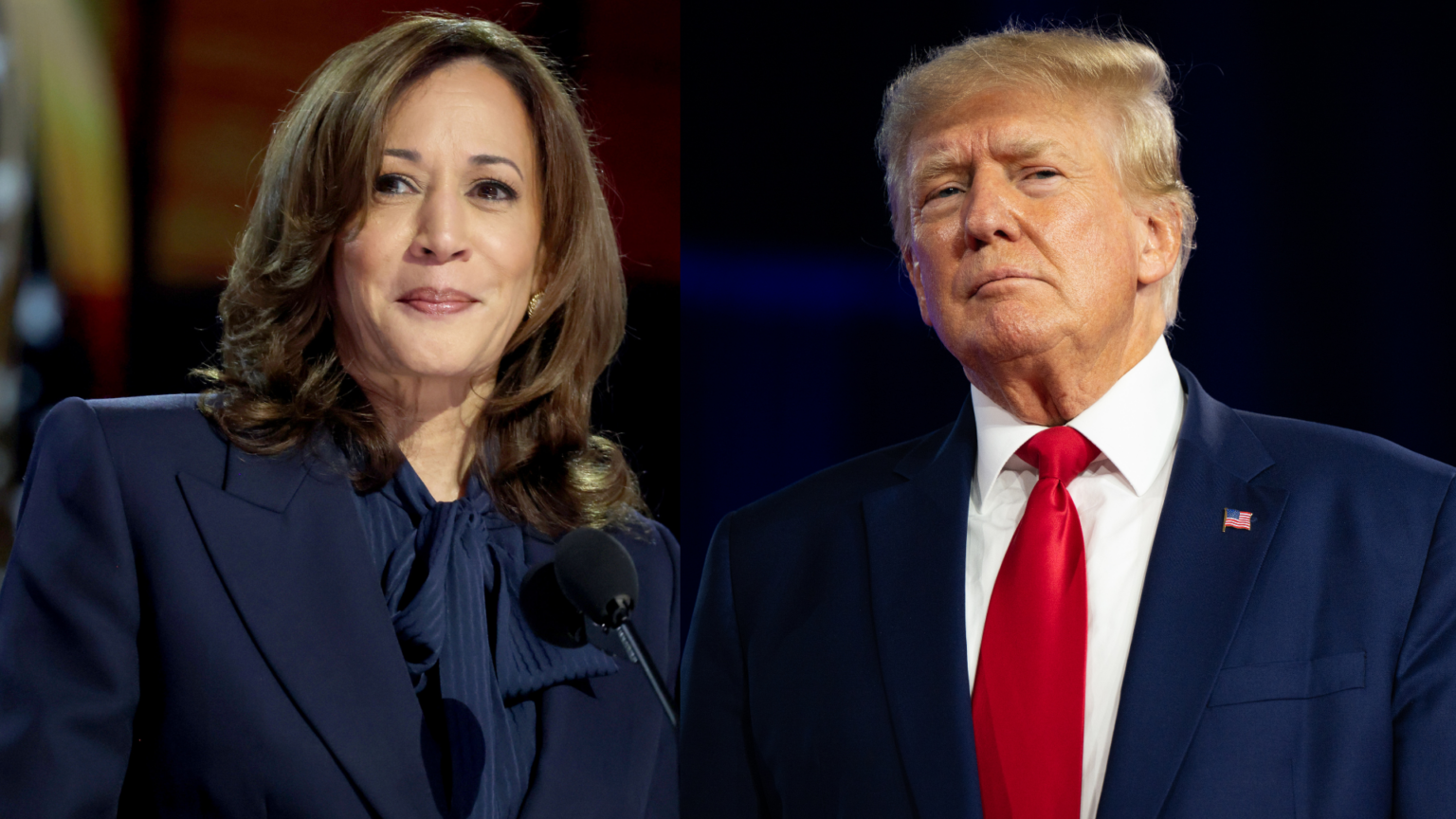University of Pennsylvania’s Wharton School of Business estimates Donald Trump’s proposed policies will increase the national debt by $4.1 trillion. Kamala Harris’ policies will increase it by $1.2 trillion.
The national debt is likely to increase regardless of who takes the Oval Office in January. It’s already well over $35 trillion and rising.
Wharton School Weighs In
The Wharton School’s analysis include projected revenue generated by each candidate’s tax proposals and the cost of their spending proposals over a ten-year term.
Donald Trump has proposed extending the tax cuts in the 2017 Tax Cuts and Jobs Act (TCJA) and cutting corporate taxes from the current TCJA rate of 21% to 15%. Wharton Schools says the government lost almost $3.4 trillion in tax revenue from TCJA’s cuts — including $623 billion from corporations.
Donald Trump has repeatedly proposed increased tariffs on imports, which he says will help boost domestic production. Wharton says a tariff increase could lead to increased revenue. However, it warns that tariff hikes could also backfire. Foreign governments could raise their own tariffs in retaliation, which could result in more expensive goods.
Trump has also promised to eliminate taxes on retirees’ Social Security benefits. Social Security recipients currently pay taxes on 50-85% of their benefits.
To his credit, Trump was the first to support eliminating taxation of service workers’ tips. The No Taxes on Tips Act is now working its way through Congress.
Though Trump is likely to cut government spending considerably, and savings will be more than offset by the $5.8 trillion decline in tax revenue. All things considered, the cut in spending and decline in tax revenue will create a net deficit of $4.1 trillion over a 10-year period.
Meanwhile, Kamala Harris favors raising taxes for corporations and wealthy individuals. Harris recently proposed tax credits of up to $50,000 for small and new businesses to cover startup costs.
She has also expressed support for increased child tax credits. Interestingly, she picked up on the “no taxes on tips” idea, likely recognizing its popularity with workers (and voters) whose income depends on tips.
Overall, Wharton School estimates Kamala’s proposals thus far will increase government spending by $2.3 trillion. However, $1.1 trillion of this spend uptick will be offset by her policy’s increase in tax revenue. Taken together, Kamala’s policies would result in a net deficit of $1.2 trillion over a 10-year period.
Spending Policies
The Wharton School analyzed each candidate’s tax plans — not potential future federal budgets. However, concerns about spending more than the government can generate through tax revenue are not necessarily limited to the Social Security Program, which may have to cut benefits by 2035 to stay solvent unless something changes.
The United States is already on the hook for more than $1 trillion in interest payments on the debt per quarter. Though Kamala Harris’ tax plan will likely produce slower national debt growth than Trump’s, it won’t eliminate the deficit on its own without a contingent plan to reduce spending.
However, Kamala would need to find places to trim $120 billion per year of the current annual government spend of $6.1 trillion — a less than 2% cut, and well within reach. If she wanted to actually put a dent in national debt, she could aim for more cuts – 5-10%.
President Biden has already touted some areas in which the government was able to cut costs, such as enabling government-run healthcare programs like Medicare and Medicaid to negotiate with drug manufacturing companies on prices and reducing excessive payments to Medicaid-managed care organizations.
Related: Mark Cuban’s Cost Plus Brings AI Innovation to Pharma, But Faces Challenges
Neither Trump nor Harris have said much about trimming the budget.
Republicans would rather not cut spending on the Departments of Defense, Veterans Affairs, and Homeland Security, which employ an estimated 60% of the federal workforce.
Democrats would rather not cut “social safety net” programs that help low-income families with basic necessities like food and housing. Democrats also hope to continue, if not boost, funding for federal regulation organizations such as the Food and Drug Administration, the CDC, and the Department of Education.
Former candidates have discussed eliminating entire agencies that they deem wasteful or harmful. Former Vice President Mike Pence suggested cutting the Environmental Protection Agency and the Consumer Financial Protection Bureau. Ron DeSantis said he would cut the IRS and the Departments of Education, Energy and Commerce.
Related: Mike Pence Seeks Taxpayer Reimbursement for Failed Presidential Run
Other “third-party” or “independent” presidential candidates have discussed aggressively slashing government spending. Asa Hutchinson mentioned cutting 10% of the government workforce. Vivek Ramaswamy proposed slashing the federal workforce by 75% to reduce “administrative waste,” over concerns about the level of bureaucracy in some federal agencies.
Some estimates show that taking the less painful approach of allowing the government workforce to dwindle through attrition – which means not replacing employees who retire or resign – could save the government $150 billion over ten years. But $15 billion a year is hardly a drop in the buckets of the $35 trillion worth of national debt.
Kamala Harris and Donald Trump have laid out their tax plans, which are projected to impact future national debt. Neither have discussed their plans for future government budgets in much detail, but they may do so in the coming months leading up to the election.
Related: Second Trump Presidency Would Reingite Inflation, 16 Nobel Winning Economists Say


